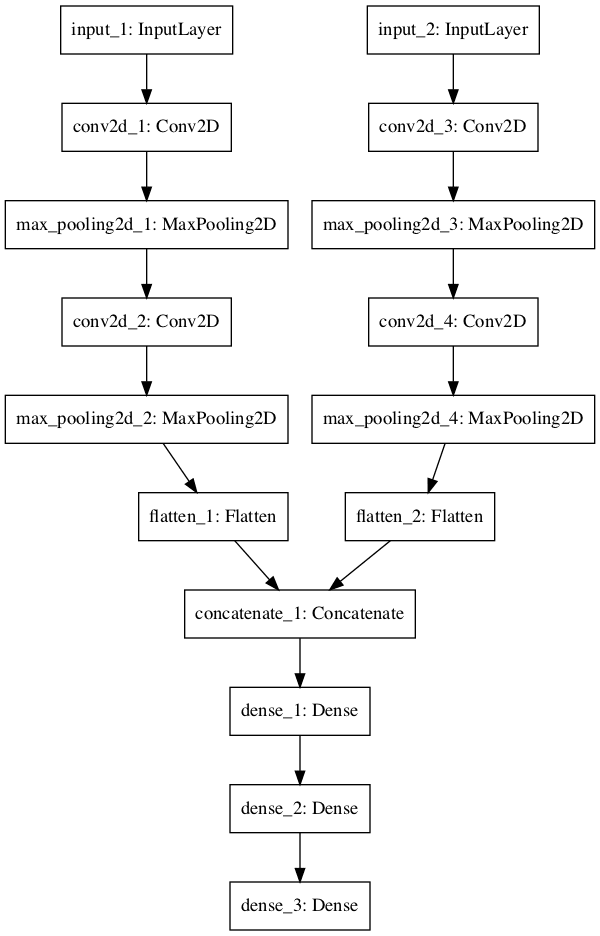"ValueError: Data cardinality is ambiguous" in model ensemble with 2 different inputs
I am trying a simple model ensemble with 2 different input datasets and 1 output. I want to get predictions for one dataset and hope model will extract some useful features from the second one. I get an error:
ValueError: Data cardinality is ambiguous: x sizes: 502, 1002 y sizes: 502 Make sure all arrays contain the same number of samples.
But I want it to fit for smaller dataset.
Architecture is like this:
Code:
import pandas as pd
from keras.models import Model
from keras.layers import Input, Dense, Flatten
from keras.layers.merge import concatenate
from keras.utils import plot_model
train_1d_X = pd.read_csv('train1d_x.csv').values
train_12h_X = pd.read_csv('train12h_x.csv').values
train_1d_y = pd.read_csv('train1d_y.csv').values
train_12h_y = pd.read_csv('train12h_y.csv').values
#model 1d
input_1d = Input(shape=train_1d_X.shape)
dense_1d_1 = Dense(16, activation='relu')(input_1d)
#model 12h
input_12h = Input(shape=train_12h_X.shape)
dense_12h_1 = Dense(16, activation='relu')(input_12h)
#merge
merge = concatenate([dense_1d_1, dense_12h_1], axis=1)
hidden1 = Dense(32, activation='relu')(merge)
output = Dense(1, activation='linear')(hidden1)
model = Model(inputs=[input_1d, input_12h], outputs=[output])
model.compile(loss='mse', optimizer='adam')
model.fit([train_1d_X, train_12h_X], train_1d_y, epochs=10, verbose=2)
Topic ensemble keras tensorflow regression deep-learning
Category Data Science

